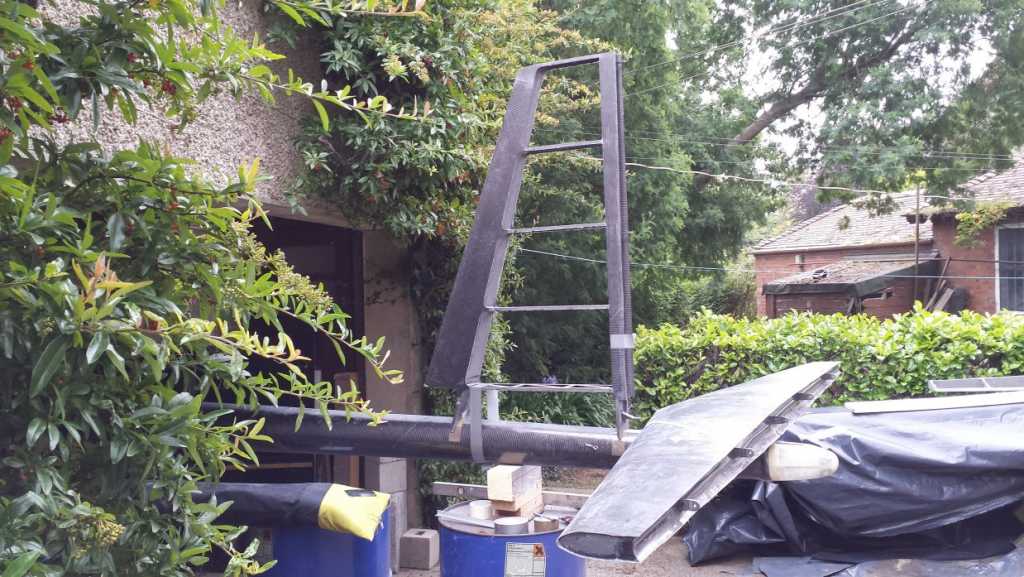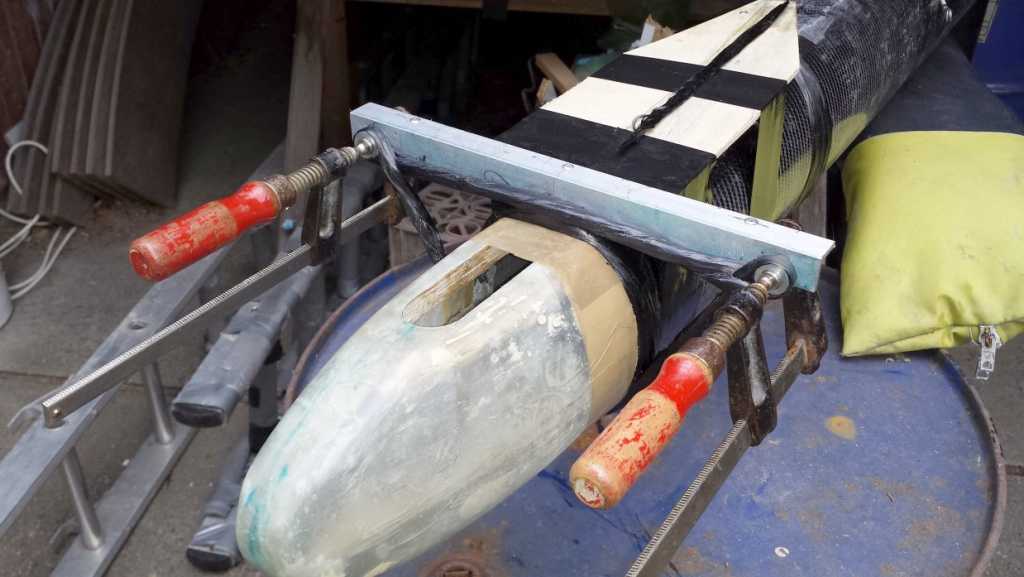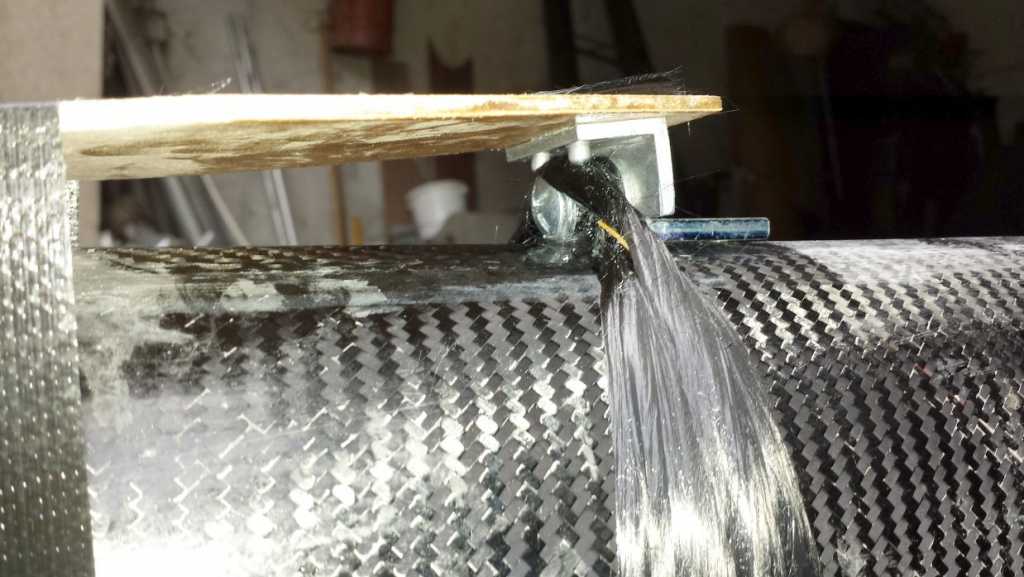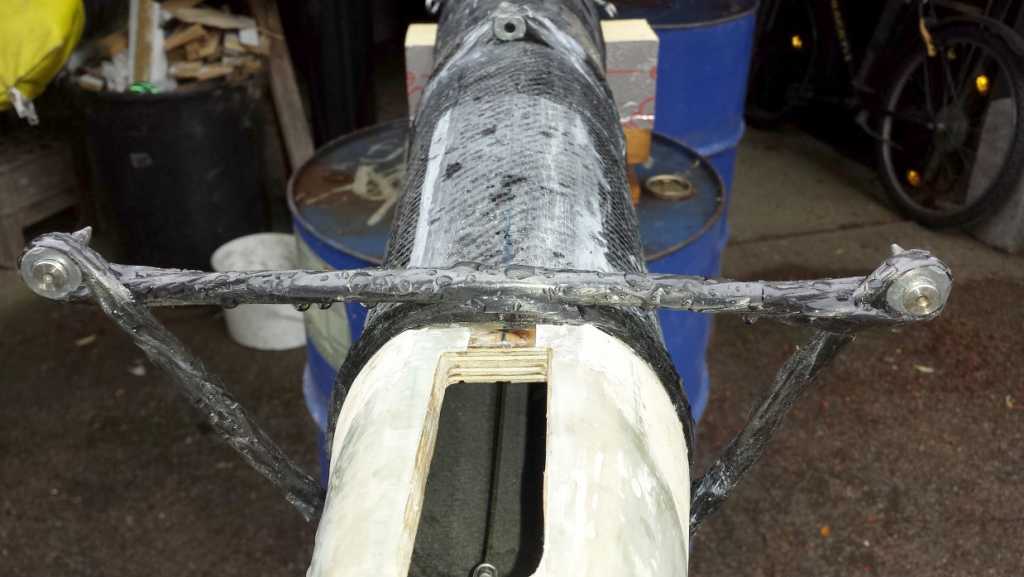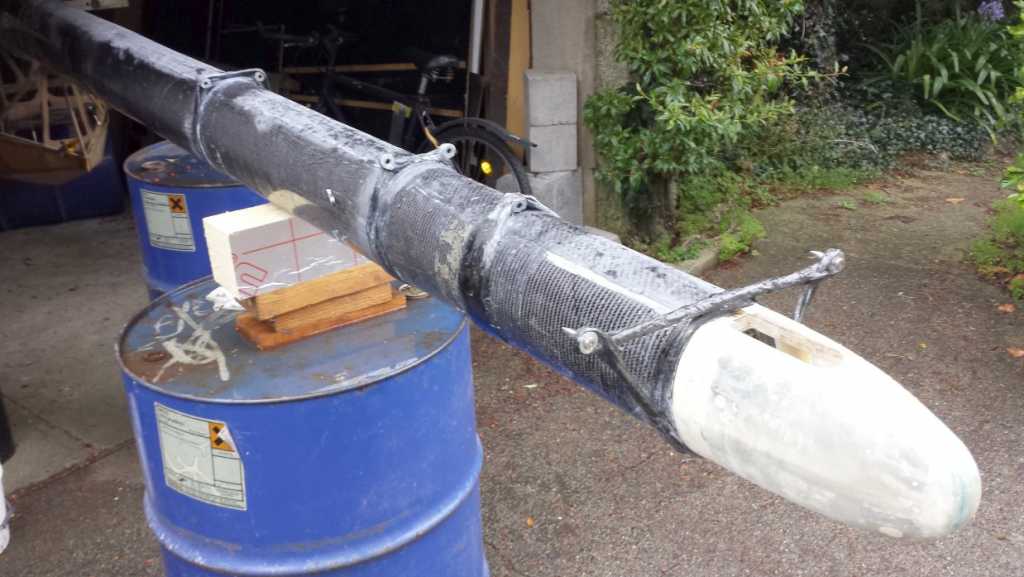A certain amount of waste is unavoidable, and I would rather waste an inch or so of carbon that gets trimmed off than risk a badly made part. After a little experimentation you also quickly learn how to judge exactly how much resin each job will take. I only mix small batches of resin as I need them, and as a result I almost never end up with any excess resin in the catch pot. There is a learning curve though!
When assembling the ribs, the bottom layer of carbon has to be pushed into the mold by the foam core, which causes the carbon cloth to 'shrink' into the mold in an unpredictable way depending on how and where you apply pressure to the foam core, so the bottom layer needs to be somewhat larger than the mold to ensure you have a little more than necessary.
Another reason to use pieces of carbon cloth that are larger than necessary is that the edges of the carbon twill weave falls apart very easily during handling and you need to allow for that. You cannot stabilize the edges with masking tape as that will prevent the cloth from conforming to the mold. Also, you cannot guarantee that the top layer of carbon cloth will remain in exactly the right position as you build up your infusion stack (peel ply, resin transfer mesh and vac bag), or that it will not move while you are adjusting the vacuum bag as you suck out the air.
You could probably waste slightly less carbon if you were to infuse each rib separately... but life's too short! Anyway, I only paid around €15/m2 for my 100m roll of carbon twill, so it's not that expensive in the grand scheme of things.
Whatever method of rib fabrication you decide to use, it's really important to make a number of prototype ribs and load test them to destruction - that is the only way to be sure that the method is safe. Whatever your results (good or bad) please post a report on the forum (photos and video if possible) so we can all learn. A negative result is just as important as a positive one!
If you want to get really fancy(!) then using pre-preg carbon might be even more economical, and there would be no need to infuse the parts - just vacuum bag and cook them. Using pre-preg materials requires a different set of skills and a temperature controlled oven big enough to take your largest parts. That may be beyond the scope of most amateurs. Worth investigating though.
Phil.
